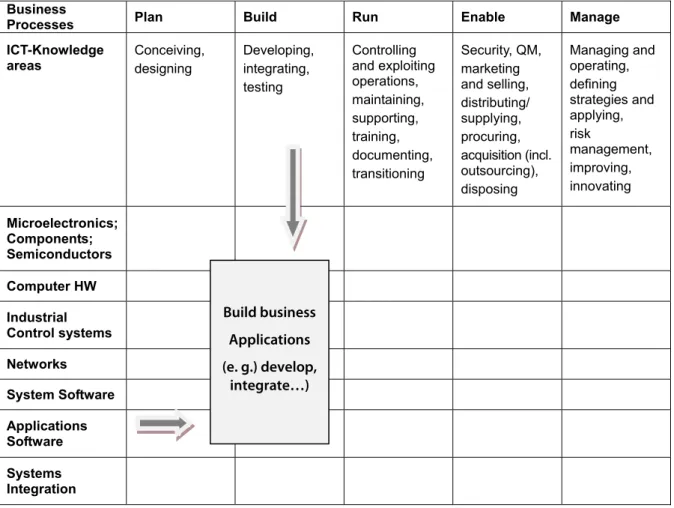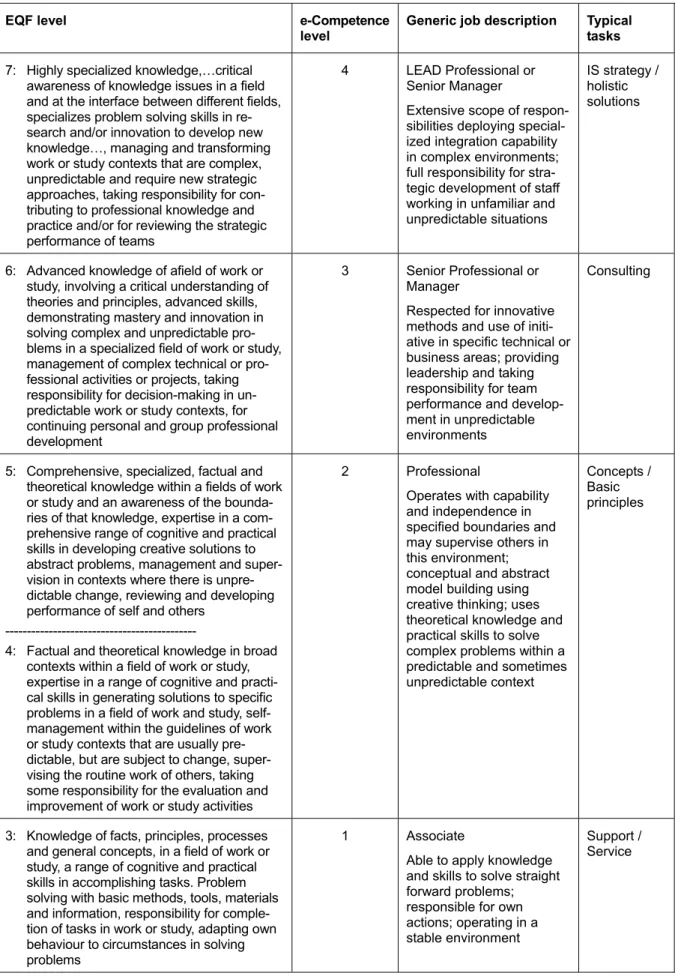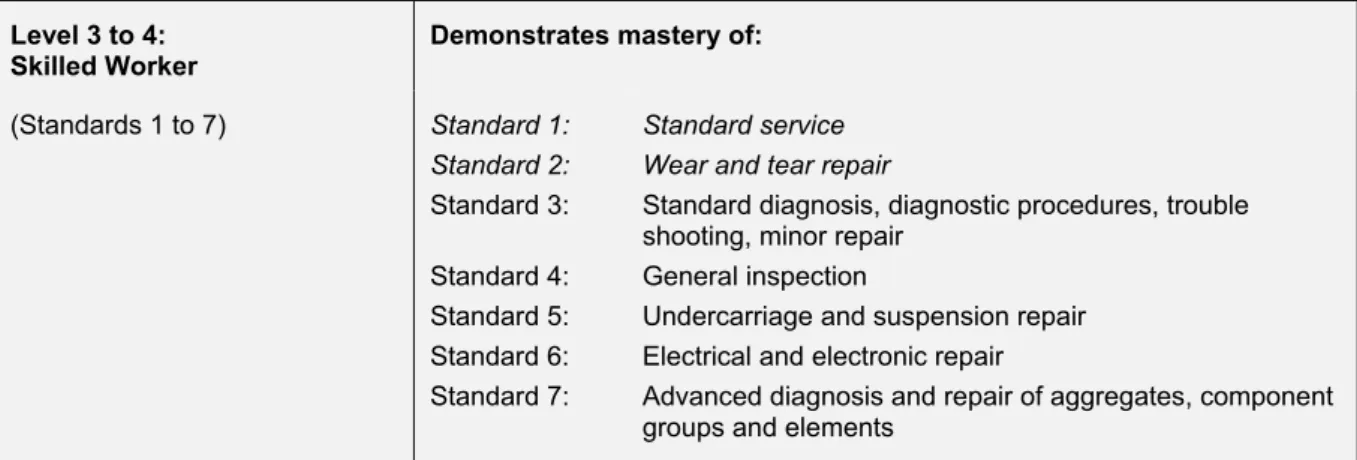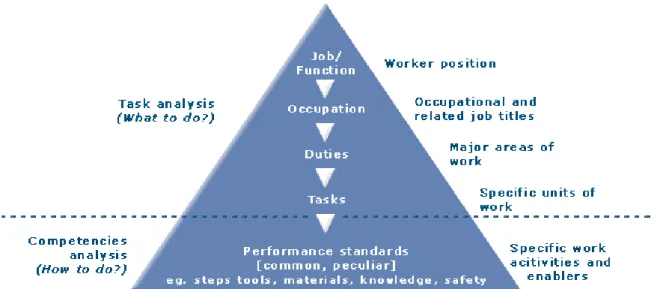The latter issue also refers to the European Commission's (EC) controversial position that qualifications and competences cannot be referred directly to EQF (direct mapping approach), but only via National Qualification Frameworks (NQF mediated approach) (cf. according to the DGfE statement the perception of EQF and DQR is dominated by the perspective of fulfilling functions in work and economic processes. EQF defines qualification as a bundle of learning outcomes in the dimensions (descriptors) knowledge, skills and competence (k/s) /c), which is referenced to the eight qualification levels in the EQF.5.
Autonomy) is rendered invisible in the English translation (version) of the DQR by adopting the EQF concept of autonomy. In the context of the European Qualifications Framework, competence is described in terms of responsibility and autonomy.”10. This reductionism is inherent in the EQF and becomes visible through the Employability Grid, which reconstructs the implicit logic of the EQF.11.
Furthermore, the formulation of the EQF descriptors follows the hierarchical positions and corresponding requirements in the classic line organization (differentiated into 8 hierarchical levels as EQF). 11 A translation device such as the Employability Grid cannot remedy the shortcomings and design flaws of the EQF. Attention is thus drawn to the freedom of choice and preparedness of the work process and work organization, as well as the question of opportunities for participation in the design of the former (aspect of shaping).
In the model of formability and optionality of work processes, on the other hand, expectations towards work and education (normative concept of work, principle of holistic tasks) and desirable competencies to develop (such as autonomy) lead to conclusions about outline of the work process.
Demands of markets and enterprises in the focus
Sectoral frameworks II: Work process based framework “Car Service and Repair”
The claim of work process analysis is that the categories for describing learning outcomes (competencies) accurately reflect what a person is actually able to do. The main purpose of work process analysis is to identify and define essential work processes, which are then operationalized by some key terms. A definition of the core competencies required to perform the basic work process.
These competences are identified in the course of the work process analysis and also serve as a basis for the reference to qualifications frameworks (EQF, NQF) at a later stage. A detailed overview of reference goals of the profession, which aims to illustrate the context of the core work process. Presentation of the draft advanced professional standards to industry experts and to the companies visited for assessment.
Presentation of new professional standards to the relevant field committee and competent committees of Chamber 10. Identification of all relevant fundamental work processes in the sector and the definition of the associated standards are the basis for the development of work process-oriented. In the description of the work processes, all abilities and skills, all the knowledge and skills necessary to perform the work are transparent.
As a reminder, in the terminology of the VET system, qualification means a bundle of competences (professional competence and personal competence). The basis for identifying the sector-relevant competencies are work process analyses, which map out the requirements that the work processes place on capacities and skills. Therefore, for the development of a sectoral framework, it is necessary to use the work process analysis to find categories that make the link with the context of work and describe competences that are developed in the schools and training companies.
The work process analysis starts with the identification and exact description of the core work processes. In Table 4, the work process-oriented professional standards are referred to levels 1 to 5+ and 6 in the example of the requirements in a car service company. For reference, the experts have defined three levels (levels 3 to 6 as described above) that correspond to levels 3 to 5/6 of the EQF.
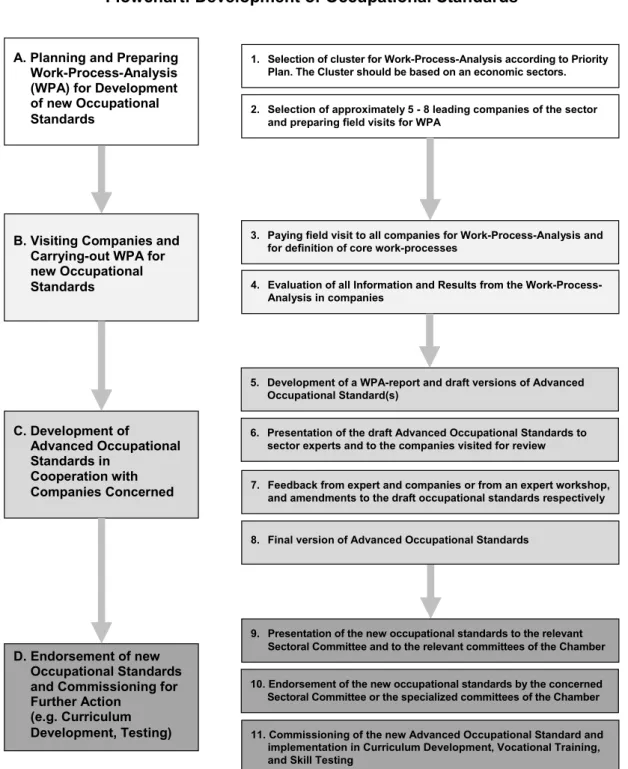
Sectoral frameworks III: Developing a logistics sector framework in the NOVALOG project
This means that a reference to the EQF is possible, but a more detailed comparison of the EQF (and DQR) descriptors shows that “functional competences”, which are an important aspect of skilled work, are missing in the EQF (cf. Spöttl/ Ruth, Table 2: 47). Some countries follow the “International Standard Classification of Occupations” (ISCO 88), which does not take into account newly emerging tasks and requirements in the logistics industry and contains only rudimentary job descriptions. The analysis of the formal qualifications that give access to logistics jobs revealed that the formal qualification level of “Warehouse Workers” (1) is quite low compared to employees with managerial responsibilities (2).
On the other hand, in the second activity area, which includes 'jobs' with managerial responsibilities (as well as 'Logistics assistant jobs'), one finds an increasing number of employees with a university degree and high-quality vocational training. The first step consists of formulating job descriptions based on empirical observations in combination with the professional logic of logistics. Further educational or vocational pedagogy claims implied in the vocational orientation model were not considered in the generation of the framework.
This may lead to the conclusion that the identified "training requirements" are defined in the sense of a simple adaptation to new job requirements, i.e. there are no concrete statements whether and to what extent "work analysis" is also right for a normative claim about education and work as included in the concept of professionalism, especially in the case of dual vocational education and training. All that is said is that enterprise recruitment and training programs need to be further developed in light of changes in the market and the growing importance of the logistics sector as a whole (cf. NOVALOG Handbook, n.d.: 85).
This is indicative of the employability model in the sense of only adaptable qualification. The basic idea is that the development of a sectoral framework in the course of the Leonardo da Vinci project "SQF-Con" supports the European lifelong learning policy in this important sector. A further demand formulated in the project refers to the availability of a sectoral framework in all European countries.
The main defining characteristic for the structure of the sectoral framework consists of the "functions" that exist in the construction sector. These are the profiles that exist for different functions in the company and are determined by the organization and challenges of the work. They would also be able to describe developments in the construction industry.
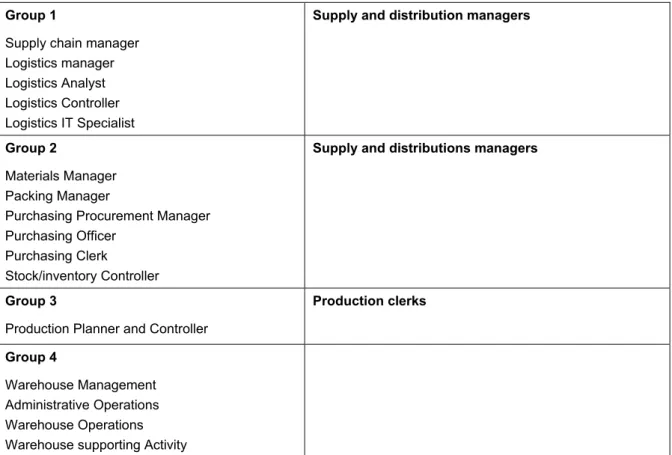
Sectoral frameworks V: The 4ING sectoral framework of Bachelor and Master programmes in engineering and computer science
A fundamental decision regarding the design of the 4ING sectoral framework was to adapt the EQF terminology of knowledge, skills and competences and not the four-pillar model of professional competence (professional competence: knowledge and skills; personal competence: social competence and independence) implemented in the DQR. The reason given was that the consistent use of the EQF terminology was a necessary condition for the implementation of the 4ING framework. However, this consistency requirement is undermined by the definition of the concepts of knowledge, skills and competences in a different way than in the EQF (see box below).
This interpretation is not compatible with the EQF definition of skills, which also includes the ability to solve problems: “Skills mean the ability to use knowledge and apply it. Only in the category "Competences" is the ability to solve problems independently (with "mental focus") mentioned. To summarize: Although the structure of knowledge, skills and competences of the EQF is accepted, the description of competences does not follow the logic of the EQF.
In particular, the term "competence" does not match the KEK's understanding of competence as a meta-category that includes autonomy and responsibility. Graduates are equipped with scientific foundations in the fields of mathematics, natural sciences and specific disciplines in engineering or computer science. Graduates understand the phenomena and problems as well as the fundamental principles of modeling in various engineering and computer science disciplines and apply this knowledge in practice.
Descriptors in the skills category go beyond routine procedures (“no mental focus”) as formulated in the short definition. It is also striking that the category of competencies includes a multitude of descriptors that imply, to a greater or lesser extent, autonomy and responsibility. categories of competences of KEK) in its own activity and in interaction with others. If the list of competencies is compared with the description of level 6 of the KEK, it is found that the 4ING framework also mentions respect for ethical principles and the ability to cooperate.
However, it is important - as it is a framework of qualifications with competence profiles of higher education graduates - that competences that can only be developed in the course of several years of professional experience are included. To summarize: Compatibility with EQF level 6 is lacking because the 4ING framework mentions relevant extra-functional competences (reflexivity, awareness of the social effects of one's own activities, consideration of ethical principles in the field of activity, cooperation) and important functional competences. for a discipline missing from the EQF. Sectoral frameworks can refer directly to the EQF without going through the national framework.
